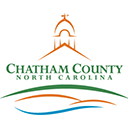Carolina Backyard Naturalist (11/17/21)
go.ncsu.edu/readext?717745
en Español / em Português
El inglés es el idioma de control de esta página. En la medida en que haya algún conflicto entre la traducción al inglés y la traducción, el inglés prevalece.
Al hacer clic en el enlace de traducción se activa un servicio de traducción gratuito para convertir la página al español. Al igual que con cualquier traducción por Internet, la conversión no es sensible al contexto y puede que no traduzca el texto en su significado original. NC State Extension no garantiza la exactitud del texto traducido. Por favor, tenga en cuenta que algunas aplicaciones y/o servicios pueden no funcionar como se espera cuando se traducen.
Português
Inglês é o idioma de controle desta página. Na medida que haja algum conflito entre o texto original em Inglês e a tradução, o Inglês prevalece.
Ao clicar no link de tradução, um serviço gratuito de tradução será ativado para converter a página para o Português. Como em qualquer tradução pela internet, a conversão não é sensivel ao contexto e pode não ocorrer a tradução para o significado orginal. O serviço de Extensão da Carolina do Norte (NC State Extension) não garante a exatidão do texto traduzido. Por favor, observe que algumas funções ou serviços podem não funcionar como esperado após a tradução.
English
English is the controlling language of this page. To the extent there is any conflict between the English text and the translation, English controls.
Clicking on the translation link activates a free translation service to convert the page to Spanish. As with any Internet translation, the conversion is not context-sensitive and may not translate the text to its original meaning. NC State Extension does not guarantee the accuracy of the translated text. Please note that some applications and/or services may not function as expected when translated.
Collapse ▲Insect Ecology and Plant-Insect Interactions
Building on last week’s class Introduction to Entomology, we’ll take a deeper dive into the highly specific relationships that insects have with one another, as well as the amazing evolutionary history between insects and plants. We will discuss not only how insects interact within their environment, but also how their environments affect them and what you can do to preserve and protect our six-legged friends.
Presenter: Sam Marshall
Horticulture Extension Agent, N.C. Cooperative Extension – Haywood County Center
 Sam Marshall is the Horticulture Extension Agent in Haywood County, NC. He provides technical support and education for nursery growers, landscapers, and farmers, as well as home horticulture information and education for hobby gardeners. He has a background in Environmental Biology/Ecology and Entomology. When not seeking out six-legged critters, Sam enjoys roaming the mountainsides with his wife Morgan and their two dogs.
Sam Marshall is the Horticulture Extension Agent in Haywood County, NC. He provides technical support and education for nursery growers, landscapers, and farmers, as well as home horticulture information and education for hobby gardeners. He has a background in Environmental Biology/Ecology and Entomology. When not seeking out six-legged critters, Sam enjoys roaming the mountainsides with his wife Morgan and their two dogs.
Presentation Slides
Plant Insect Interactions Part 1
Plant Insect Interactions Part 2
Plant Insect Interactions Part 3
Additional Resources
Field Guide to Insects of North America, Eric Eaton and Kenn Kaufman
Insects: Their Natural History and Diversity, Stephen A. Marshall
Do Cultivars of Native Plants Support Insect Herbivores? Baisden et al 2018




